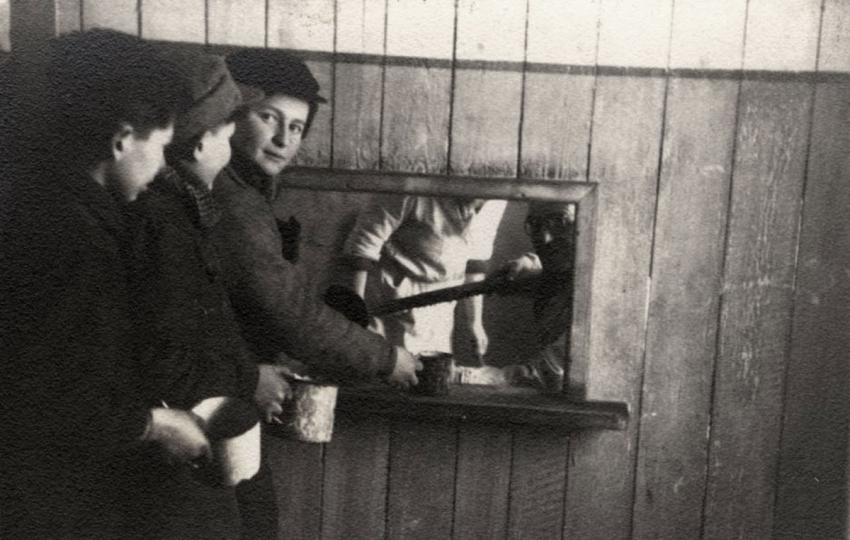On 24 June 1941, two days after the German invasion of the Soviet Union, Germany occupied the city of Kovno (Kaunas) in Lithuania, following which the Germans and their Lithuanian collaborators murdered thousands of Jews in the city. In August, a ghetto was established in Kovno, in which almost 30,000 Jews were confined. The mass killings continued even after the establishment of the ghetto, and within two months, thousands of ghetto inmates had been murdered. The Aktions were discontinued in late October due to pressure from military elements and members of the German civil administration, who wanted to exploit the ghetto Jews for forced labor. The 17,000 remaining inmates were forced to work for the German war effort. Some two thousand Jews, most of them skilled artisans, were organized into "brigades" and assigned to jobs related to the war effort. Another 4,600 Jews worked in the ghetto workshops, One such workshop produced 1,000 wooden sandals per month for workers, without which they would have had to go out to work barefoot. Given no wages, the workers subsisted on starvation rations. To stay alive, the ghetto inhabitants sold off their remaining possessions and used the proceeds to buy the food that was being smuggled into the ghetto.
In an effort to compensate the workers in some way, the workshops established bakeries where workers could bake their own bread. The Judenrat encouraged the opening of secret bakeries in the ghetto, and even maintained a clandestine flour mill. The desperate hunger raging in the ghetto led to the planting of agricultural gardens, which were guarded in order to ensure that those most in need would benefit from the produce.
The welfare department of the Judenrat also ran a soup kitchen, where hundreds of people would receive a lunch of watery soup each day.
According to the Memorial Book for Lithuanian Jewry, 70-80% of Jews in the ghetto would eat one watery, tasteless dish for lunch, consisting of some potatoes, barley and beans. This dish was known in the ghetto as "Yoshnik" (pigswill). In spite of this, people in the ghetto did not die of hunger in the streets.
In March 1944, the Aktions recommenced in the Kovno ghetto. In July 1944, with the approach of the Red Army, the Germans started to evacuate the Jews from the ghetto and labor camps to Germany. Thousands of Jews hid in bunkers inside the ghetto. Retreating from Kovno, the Germans took those Jews whose hiding places were discovered with them for forced labor, and murdered some 1,500 Jews when bombing and burning down the ghetto dwellings. Only several dozen survived.
The Red Army liberated Kovno on 1 August 1944, three weeks after the liquidation of the ghetto. In total, some 3,000 Kovno Jews survived the Holocaust. 2,500 were liberated in Germany, and 500 survived with the partisans and in hiding.
Yad Vashem Photo Archives, Tory Collection, 7003/2







